Round brilliant diamonds are unquestionably the most sought-after gem shape due to their ability to maximize sparkle and exude elegance. However, there is another diamond shape that combines the timeless appeal of round diamonds with a distinctive look – the oval diamond.
Hence, when it comes to the round vs. oval diamond debate, determining which one is superior depends largely on personal preference. Nevertheless, there are several factors to consider when contemplating the purchase of either of these diamond shapes.
This article aims to explore all the distinguishing characteristics that set these two classic and enduring diamond cuts apart. By delving into these disparities, we hope to assist you in making an informed decision when the time comes to select your preferred option.
So, without any further delay, let us uncover the dissimilarities between round and oval diamonds!
DESIGN YOUR OWN ENGAGEMENT RING: START WITH A SETTING OR START WITH A DIAMOND. IT’S REALLY UP TO YOU!
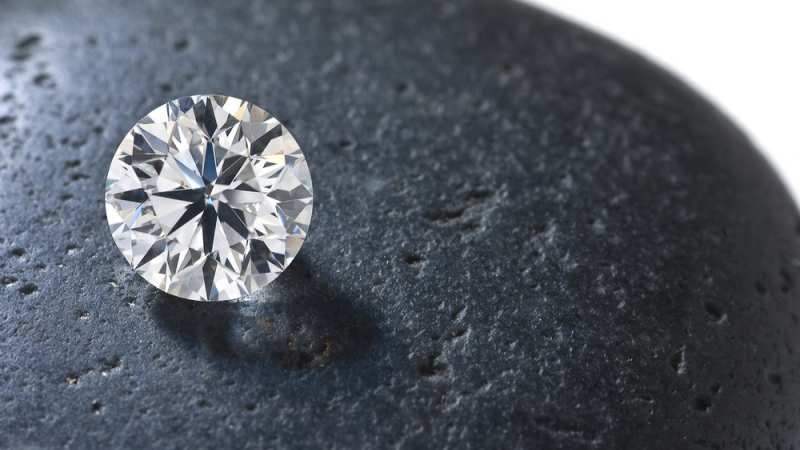
What Is A Round Diamond?
The round diamond holds an unrivaled position as the most coveted gemstone shape, thanks to its timeless elegance, captivating sparkle, and impeccable symmetry. This particular shape, often chosen for engagement rings, boasts precisely 58 facets, resulting in a breathtaking round form that showcases unparalleled brilliance.
Indeed, the round diamond sets the benchmark against which all other diamonds are compared, establishing its status as a true classic. Furthermore, round diamond engagement rings offer a wide array of styles, ensuring that everyone can discover their perfect ring. From solitaire settings to five-stone designs, the versatility of options is remarkable, and the resulting sparkle is truly mesmerizing.
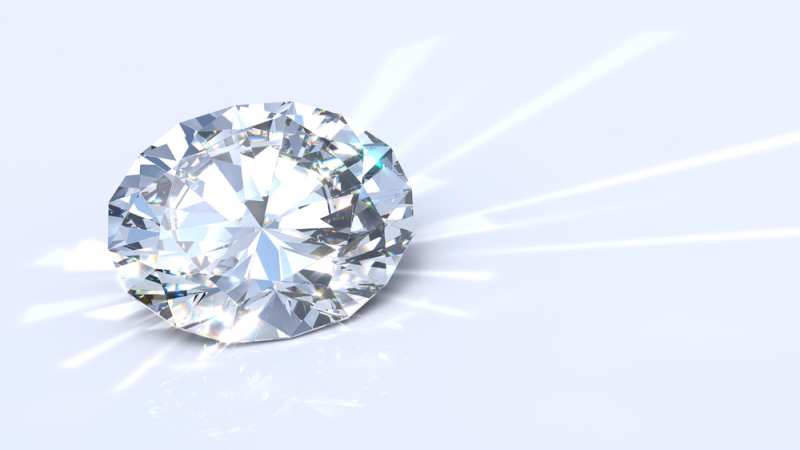
What Is An Oval Diamond?
The oval diamond, categorized as a fancy-shaped diamond, is undeniably a stunning gemstone. Its elongated shape offers a distinctive and elegant aesthetic that captures attention effortlessly.
Oval diamonds come in a range of height-to-width ratios, from nearly round to narrow and elongated. However, the most visually pleasing variants typically fall within the ratios of 1.3:1 to 1.5:1, striking a harmonious balance.
One of the reasons why oval engagement rings have gained popularity is their ability to enhance the beauty of any finger. Additionally, these rings often give the illusion of appearing larger than their actual carat weight, adding to their allure.
With its unique charm and the ability to create a remarkable presence, the oval diamond continues to captivate admirers seeking a distinctive and captivating engagement ring.
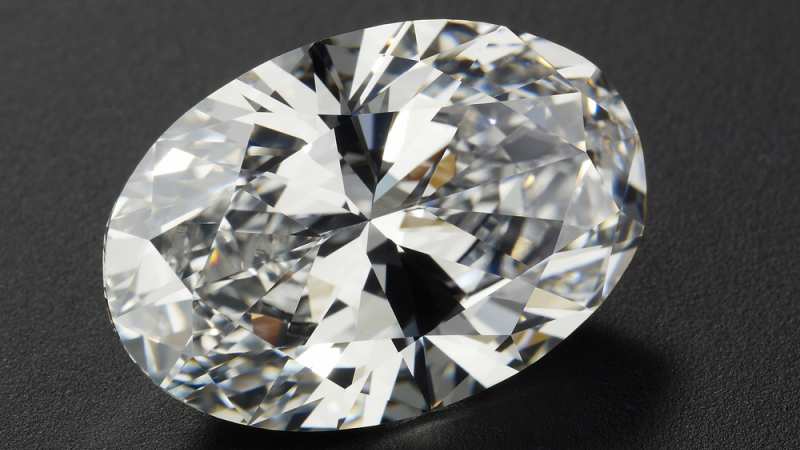
Round Vs. Oval: Style
Both round and oval diamonds have been part of the diamond world for centuries, with their origins dating back to the 17th century. However, the modern iterations of these shapes, which are beloved by many today, were developed in the 20th century.
Round brilliant and oval diamonds have always possessed a timeless appeal that remains consistently popular. It is safe to say that these shapes will never go out of style.
In terms of style distinction, the round brilliant diamond is considered more standard, traditional, and classic. On the other hand, the oval-shaped diamond embodies a classic aesthetic with a touch of uniqueness.
If you desire a diamond with a traditional and elegant look, you can never go wrong with a round brilliant diamond. It is considered the industry standard and represents the epitome of diamond shape.
However, if you seek a gemstone that offers a touch of uniqueness while still exuding sophistication and classic charm, the oval-shaped diamond is an excellent choice.
While oval diamonds provide a distinct appearance, they are also remarkably versatile compared to other fancy-shaped diamonds like heart-shaped or marquise diamonds.

Round Vs. Oval: Sparkle
When it comes to sparkle, the round diamond reigns supreme among all diamond cuts. This is primarily due to the faceting technique employed in round brilliants.
Round diamonds are renowned for providing maximum brilliance, fire, and scintillation, thanks to their meticulous faceting.
While round diamonds offer the highest level of sparkle, oval diamonds are not far behind. After all, they too are classified as brilliant-cut diamonds.
Oval diamonds are essentially modified versions of round brilliants, sharing a similar faceting method. The disparity in sparkle is primarily attributed to variations in symmetry and shape. It’s important to note that depth and shape also contribute significantly to a diamond’s light performance, extending beyond the mere arrangement of facets.
Within the category of brilliant cuts, the oval-shaped diamond exhibits exceptional radiance. Its design and shape allow for optimal brilliance, fire, and scintillation.
In summary, both round and oval diamonds possess remarkable sparkle. However, if you seek maximum sparkle, the round brilliant diamond is the preferred choice.
It’s crucial to emphasize that sparkle is not solely determined by the diamond’s shape. The 4C’s (color, clarity, cut, and carat weight) play an equally significant role in a diamond’s sparkle. Therefore, while a round diamond may generally exhibit more sparkle than a similar oval diamond in terms of color, clarity, and cut grade, some oval diamonds can surpass round diamonds in brilliance when they possess higher grades in these categories.
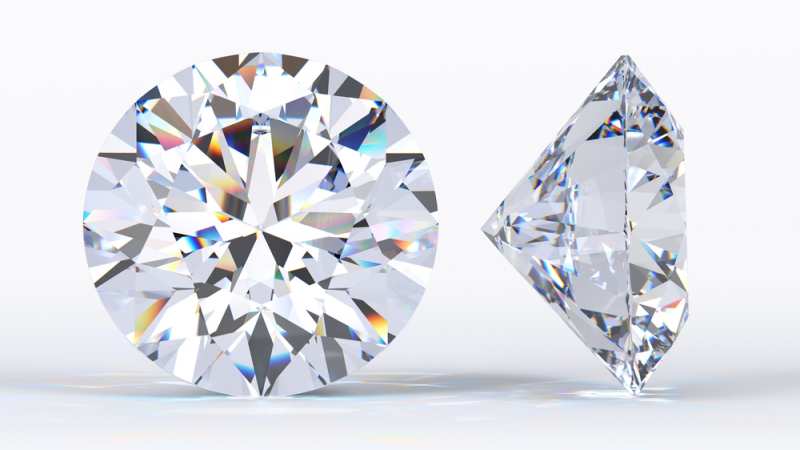
Round Vs. Oval: Imperfections
When comparing round and oval diamonds, it is important to consider the imperfections related to the 4C’s: cut, clarity, color, and carat weight.
Round diamonds tend to exhibit fewer color imperfections compared to oval diamonds. This means that when selecting a round diamond, you may be able to choose a lower color grade without significant visible color issues, whereas with oval-shaped diamonds, paying attention to the color grade is crucial if you desire a gem that appears colorless to the naked eye. This is because oval diamonds are shallower in nature.
Although round diamonds generally carry a higher price tag, they are more forgiving in terms of color grades. On the other hand, due to their elongated shape, oval diamonds can exhibit a bow-tie effect, which is a dark patch in the middle where light is not reflected. It is important to be aware of this characteristic and take it into consideration during the selection process.
Round diamonds, regardless of their cut quality, will never have a bow-tie effect. However, oval diamonds can be prone to this phenomenon. Therefore, it is essential to pay attention and be informed on how to avoid bow-tie oval diamonds.
In terms of clarity, round brilliant diamonds are more forgiving of minor inclusions due to the brilliance and sparkle that their cut provides, which can help mask imperfections. For round diamonds, paying closer attention to the clarity grade is necessary.
Oval diamonds, on the other hand, have the advantage of better concealing blemishes and inclusions, especially near the edges of the stone. They tend to hide these imperfections better than round diamonds. Therefore, when it comes to clarity, focusing on the grade is relatively more critical for round diamonds compared to oval gems.
In summary, with round brilliant diamonds, cut and clarity are of paramount importance, while color and cut take precedence when considering oval diamonds. Understanding these distinctions will assist you in making an informed decision when selecting the right diamond for your preferences and requirements.
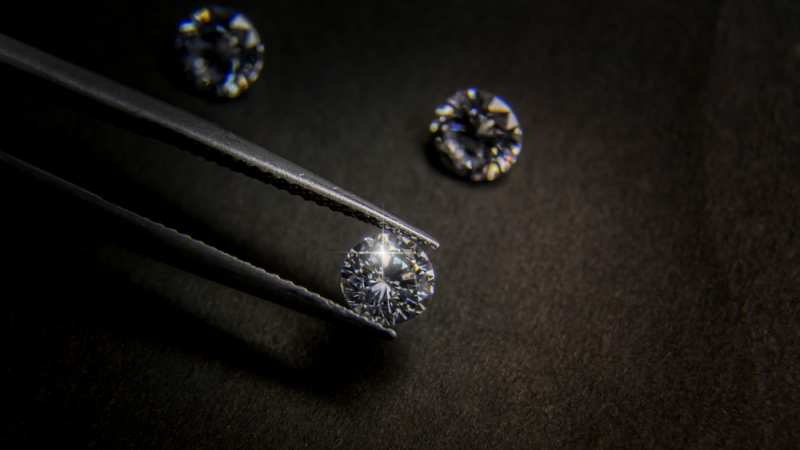
Round Vs. Oval: Size
The size of a diamond is typically measured in carat weight, and both round brilliants and oval-shaped diamonds are available in various carat weights.
In addition to carat weight, the dimensions of the stone can also impact its appearance and light performance. Two crucial factors to consider are depth and table size:
- For round diamonds, the ideal depth percentage falls between 59-63%, while the ideal table percentage is 54-57%.
- As for oval diamonds, the ideal depth percentage is below 68%, and the ideal table percentage ranges from 53-63%.
Choosing a stone within these ranges allows you to maximize both size and brilliance.
In terms of visual perception, oval-shaped diamonds tend to appear larger than round brilliant diamonds of the same carat weight. This is due to the elongated surface area of ovals, which is more spread out as they are shallower in nature. It is often said that an oval diamond appears approximately 10% larger than a round diamond of the same carat weight.
An additional advantage of the elongated shape of oval diamonds is how well they complement different finger types. They can enhance the appearance of both slender and shorter fingers. Oval diamonds add elegance to long and thin fingers, while they create the illusion of slimmer fingers for those with shorter fingers.
In conclusion, whether you have slender or short fingers, choosing an oval diamond can be a win-win situation, as it offers the perception of a larger size and complements various finger types.
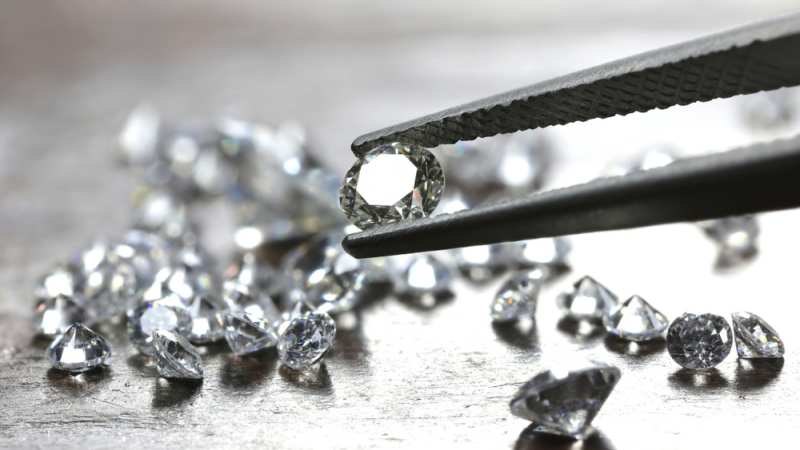
Round Vs. Oval: Shape
When discussing diamond shape, it goes beyond the obvious distinction between round brilliants and oval-shaped diamonds.
Round brilliants will always have a perfect round shape, as circles maintain consistent shape characteristics. In contrast, oval diamonds can vary in shape, with variations ranging from broad to long and slender.
When considering the purchase of a round diamond, the focus lies on factors like depth and table percentage, as the shape is always consistent. However, when selecting an oval diamond, it becomes essential to consider its actual shape.
The length-to-width ratios of oval diamonds typically range from 1.30 to 1.66, providing a wide range of options. The classic ratio tends to be around 1.45. However, there is no right or wrong choice when it comes to the shape of an oval diamond, as it ultimately depends on personal preferences.
Some individuals may prefer longer oval diamonds, as they create the illusion of slender fingers. Others may gravitate towards wider oval diamonds that resemble round diamonds in appearance.
The beauty of an oval diamond lies in its uniqueness and the ability to cater to personal preferences. You have the freedom to choose the shape that resonates with you the most, making your diamond selection truly personalized.

Round Vs. Oval: Popularity And Rarity
Round diamonds dominate the diamond industry in terms of popularity, largely due to the industry’s emphasis on promoting this shape. For every 25 round brilliant diamonds, you will typically find only one oval-shaped diamond.
The production of round brilliant diamonds occurs on a much larger scale, resulting in oval-shaped diamonds being comparatively rarer to come across.
Despite this, oval diamonds still enjoy significant popularity compared to other diamond shapes. In recent years, oval-shaped diamonds have emerged as a go-to choice for engagement rings and various other types of jewelry.
However, it is important to note that while oval diamonds have gained popularity, round brilliant diamonds remain at the forefront as the most favored and sought-after shape in the diamond market.

Round Vs. Oval: Versatility And Setting Choices
Both round and oval diamonds are known for their versatility and suitability for various types of jewelry. However, the round brilliant diamond holds a slight advantage in terms of versatility, particularly as an accent stone in jewelry designs.
The round brilliant diamond’s unique faceting allows it to complement and enhance other gemstones or be used as smaller accent stones more easily. This makes it a popular choice for accentuating the beauty of jewelry pieces.
When it comes to engagement ring settings, both round and oval diamonds can look stunning in any style, whether it’s a halo, three-stone, or solitaire setting. The brilliant sparkle and elegant shape of both diamond cuts make them highly versatile and adaptable to different settings.
Another notable advantage of round and oval diamonds is their durability. Since they don’t have sharp edges like some other diamond shapes, they are less prone to chipping or breaking. As a result, additional protective measures for the ring setting may not be necessary, allowing more of the diamond’s brilliance to be showcased and admired.

Round Vs. Oval: Price
When it comes to pricing, the primary determining factors are the 4C’s of diamonds: cut, clarity, color, and carat weight.
However, when comparing round diamonds with oval diamonds of similar quality, you will typically find that oval diamonds are priced around 20-30% lower than round brilliant diamonds.
There are two main reasons for the price difference:
- Firstly, the demand for round brilliant diamonds is generally higher than that for oval diamonds. The popularity and market demand contribute to the higher pricing of round diamonds.
- Secondly, the cutting process of round brilliant diamonds results in more wastage of rough diamond material compared to oval diamonds. This inefficiency in the cutting process adds to the overall cost of round diamonds.
In conclusion, the round brilliant diamond is generally considered the most expensive diamond shape due to its popularity and the inefficiencies in the cutting process. However, it’s important to note that the pricing of diamonds should always be evaluated based on the individual grading of the 4C’s. A higher-grade oval diamond can still be priced higher than a lower-grade round brilliant diamond, emphasizing the significance of considering all factors when assessing diamond prices.
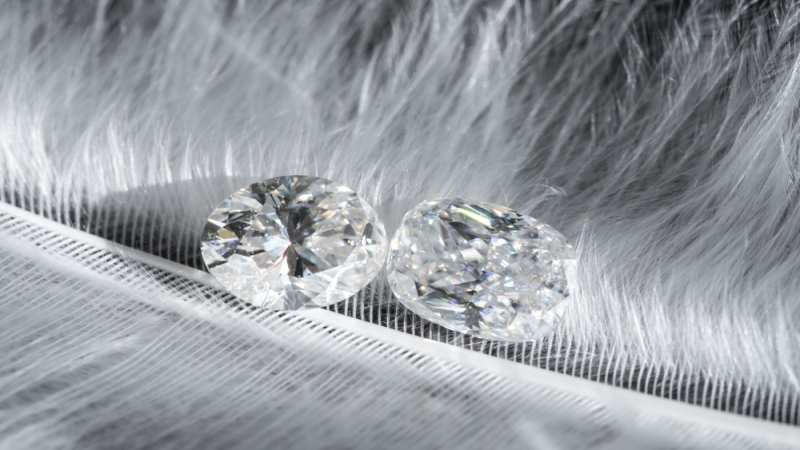
Which One Is Right For You?
Ultimately, the decision between a round and oval diamond boils down to personal preference. There is no definitive answer as to which is better, as both options are exceptional and timeless in their own right.
If you prefer a more traditional and classic style, and prioritize maximum sparkle, we recommend choosing a round brilliant diamond. Round diamonds are known for their brilliance and are a popular choice for engagement rings. Additionally, round diamonds offer a wide variety of setting options to choose from. If budget is not a major concern, a round brilliant diamond would be an excellent choice.
On the other hand, if you desire a unique yet timeless style and are looking for a larger-looking stone, an oval-shaped diamond is a great option. Oval diamonds offer a distinct elegance and can create the illusion of a larger size due to their elongated shape. They also tend to be priced slightly lower than round diamonds, making them a more cost-effective choice for those looking for a standout diamond engagement ring.
In the end, consider your personal preferences, style, and budget when making the decision between a round or oval diamond. Both choices have their own allure and will make a beautiful statement in any piece of jewelry.


